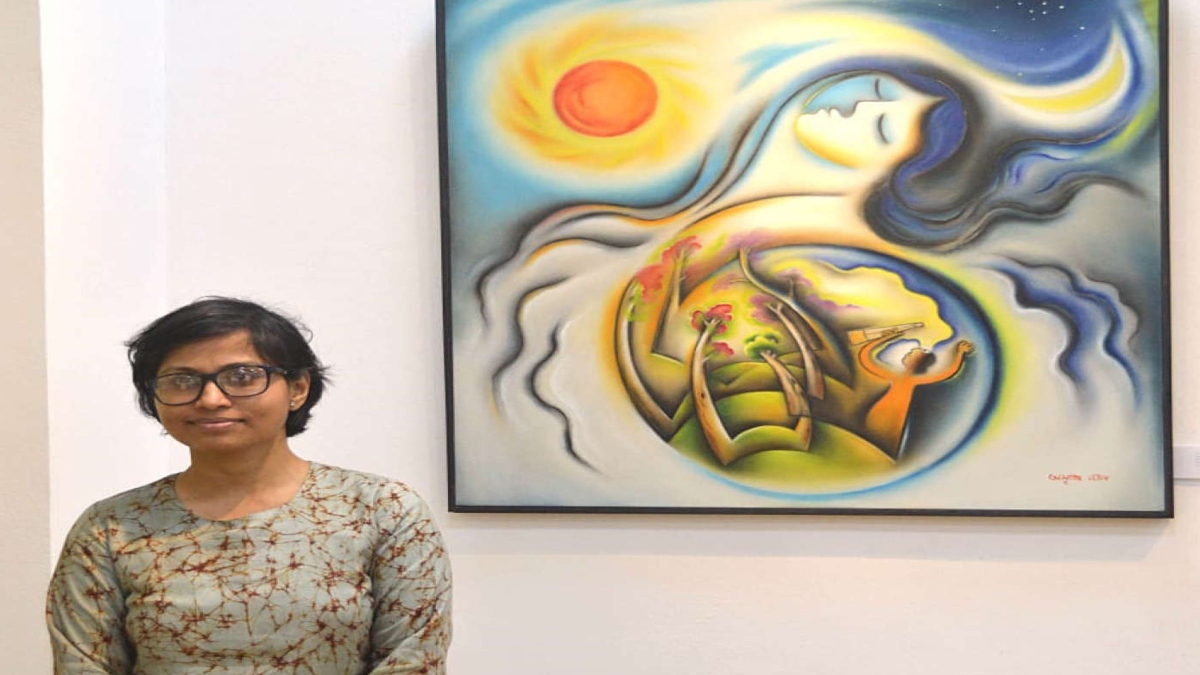


Aamaar Aranya which in Bengali means ‘My Forest’ is a solo exhibition of paintings, drawings, and mixed media works which deals with the subject and idea that revolves around the human relationship with nature and forest. In establishing this relationship, human attitude towards nature and the world plays a very vital role. This show was recently organized by Delhi based artist Amrita Ghosh at India Habitat Centre, New Delhi.
In this present series of works, she has tried in her way to portray this relationship in different socio-cultural, environmental, and historical contexts. Tribal and indigenous subjects have played a significant part in this series.
Mahasweta Devi’s 1977 novel Aranyer Adhikar has played a large and significant role in this series. The way she has portrayed Birsa Munda and his connection with the forest and his motherland and its people, in this novel, has deeply inspired her. This exhibition includes works titled Birsa and His Mother Forest, Ulgulan, and The Ninth of June 1900.
Artist Amrita Ghosh says, “I can’t express in words how strongly the literary creations like Rabindranath Tagore’s Religion of The Forest, Tapovan, Aranya-Devata, Bolai, Chhinnapatrabali; Bibhutibhushan Bandopadhyay’s Aranyak or Pather Panchali poems of Jibananda Das and Shakti Chattopadhyay have inspired me and how enormous their influence has been in this artistic journey of Aamaar Aranya. Also, there is Chittaranjan, the place where I grew up. Its natural environment, characterized by beautiful greenery and wavy land, and its history which tells about setting up of industry and industrial towns at the cost of forest lands and tribal villages in the past, have also acted as one the major sources of inspiration. And there is Santiniketan, where I studied art. Formed and founded in the ideals of Tapovan and Gurudeva Rabindranath’s ideas and thoughts of environmental primitivism, Santiniketan’s closeness with nature has had a considerable influence in conceptualizing this series.”
Comprising of works executed in the mediums like oil paint, watercolor, charcoal, pen and ink and mixed media, this exhibition includes works like ‘Hand in Hand’, or ‘Being one with the tree’ those reflecting the relationship of union between human and nature; like ‘Mahamilan’ depicting people who live in harmony with nature and protect her, the unity in diversity in the natural world; works like ‹Where will the Chenar Tree and the Squirrels Go?’ or ‘The Big Bees’ those focussing on the deforestation, destruction of wildlife habitat, and the ecosystem. Also, there are works showing industrialization, and urbanization at the expense of forest and environment and the separation of the Adivasis from their mother forest; the colonial attitude to the forest and indigenous people, and also the attitude of the modern urbanites who often consider the forest as the obstacle on the path of their progress and development.
“It’s indeed a vast subject. I have tried to present my perception of and feeling towards the subject of the human relationship with forest and nature. in my semi-figurative style and poetic and imaginative association,” she has further added.